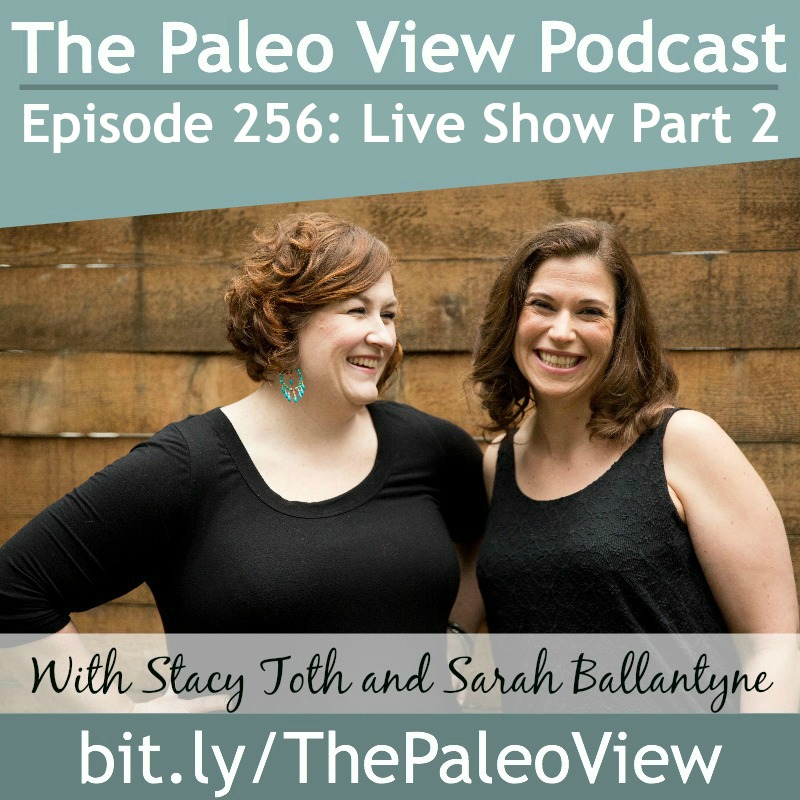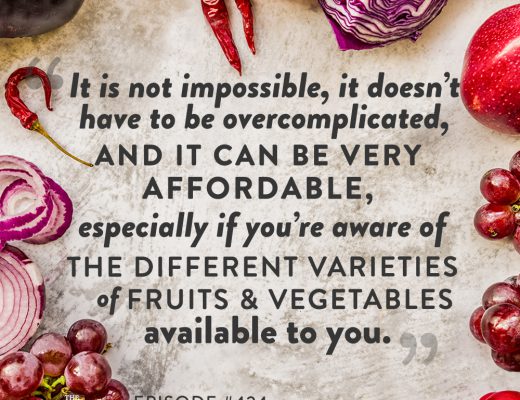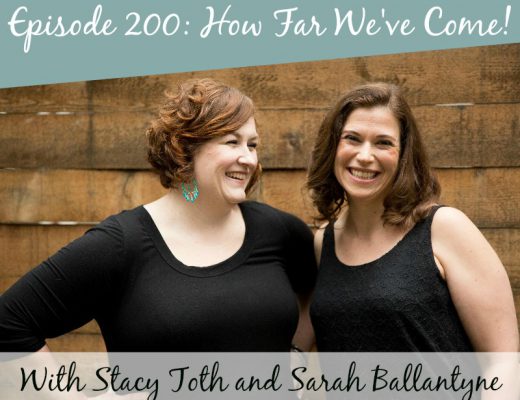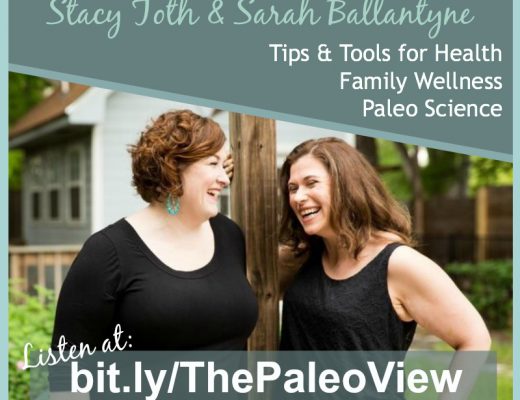Ep. 256: Live Show Part 2
In this episode, it’s the second part of our LIVE show! With tricky questions and thorough answers!
Click the picture above to be taken to iTunes
or download and listen by clicking the PodBean Player below
![]()
If you enjoy the show, please review it in iTunes!
The Paleo View (TPV), Episode 256: Live Show Part 2
- Intro (0:00)
- Welcome to the live show, this is Part 2 of our show! Listen to Part 1 of the live show here!
- Question 1: (:40) Lee’s Question: should she do an elimination diet, take a food allergy/sensitivity test with her doctor, or make other lifestyle changes to deal with autoimmunity? What’s the easiest way to identify her triggers?
- Sarah: two issues here, dealing with a lifestyle triggers AND making positive changes to lifestyle.
- Lee needs to figure out if she has SIBO, through further testing, and her doctor should be able to help her figure out this aspect of her intolerances. She should also retest.
- She could also just be dealing with fructose malabsorption, which requires a different course of treatment.
- Gut health is important either way—work up to 8 servings of veggies per day, eat more fish, don’t over-exercise, sleep enough.
- Emotionally speaking: you can shorten your elimination phase to get into reintroductions more quickly
- Keep a food journal for reintroductions, and try to keep a couple days between your reintroductions. Know also that if you’re stressed physically or mentally, your immune response will be affected.
- Stacy: there are other outside factors like cleaning products, beauty products, other lifestyle factors in the home.
- Stacy’s approach is build up healthy choices and nourish the body so that your health should get better over time. It’s a trajectory, not a matter of waking up one morning to completely new picture of health.
- Remember that flares are to be expected, sometimes even caused by detoxing.
- Consistency is really important – approach it from a place of doing it for yourself, for your health.
- Lee has been trying to focus on the positives of her new healing life rather than the negatives of “losing” old foods
- Stacy takes that approach too. Her family cooks better food, she’s healthier and her life is better.
- Sarah: instead of doing EVERYTHING at once, breaking up your changes into pieces can be helpful.
- Sarah went from Paleo 6 years ago, to AIP elimination, to CrossFit when she wanted to try it. It’s been a refinement of lifestyle and dietary choices that incrementally help her feel better
- Matt and Stacy wrote the book (Real Life Paleo) on taking the diet part of Paleo and breaking it up into pieces.
- Just do one thing until you get it down.
- It needs to be sustainable in order to really last. Sarah has a couple posts about that called “Making Healthy Choices: What’s Your Currency” and “Transitions: All In or Baby Steps?”
- It’s not hard, although everyone mourns something different.
- Stacy: the food shouldn’t be stressful
- Sometimes Stacy and Sarah are eating pizza and ice cream in their crazy dreams. And that’s usually a sign for Stacy that she’s thinking about food too much.
- Lee says she’s struggled with reactions from people in her life.
- Sarah says it’s not hard, it just has a learning curve.
- Everybody has comfort recipes, but finding new go-to’s that fit a healthier lifestyle just takes a little time
- Sarah: two issues here, dealing with a lifestyle triggers AND making positive changes to lifestyle.
- Melissa’s Q: (28:00) How should someone without a gallbladder approach beginning a Paleo journey?
- Stacy:
- She doesn’t have a gallbladder. Understand you are missing part of your digestive tract.
- Eliminating wheat and processed oils made the biggest difference. There’s a strong correlation between wheat intolerances/Celiac disease and gallbladder inflammation.
- More in this post: The Link Between Celiac Disease and Gallbladder Sensitivity.
- This led to some “everybody out” moments for Stacy nearly every day when she was eating processed oils.
- You want to watch the state of your bowel movements to track how your body is digesting.
- Stacy does not do well with coconut oil, but does well with avocado oil and solid fats like tallow, lard, butter, duck fat.
- Stacy also has a post on this, How to Enjoy Bacon Without a Gallbladder.
- Insoluble fiber can be difficult for Stacy’s body as well.
- Cabbage used to be tough for Stacy to digest.
- She’s learned to cook foods that are high in insoluble fiber very thoroughly.
- When you start your first meal of the day, start slow, reintroduce food to your body.
- Intermittent fasting does not work because you don’t have bile storage.
- Sarah
- You can take ox bile, in a pill, at the beginning of a meal (work with a practitioner on this).
- As lipases break apart fat, bile salts help to create a structure around fat molecules that brings them into the body.
- So, it’s helpful in digesting and absorbing fat but ALSO in digesting and absorbing vitamins. It can help with nutrient sufficiency.
- Stacy
- Her mom doesn’t have a gallbladder, and when she was still eating vegetarian, she was low fat (and high soy/wheat) and still struggling.
- Stacy doesn’t think it’s a low-fat diet that actually helps.
- Stacy:
- Melissa’s second question: On Lichen Planus?
- Sarah
- It’s most commonly a secondary disease (Hashimoto’s and Celiac are more likely to be primary).
- It’s worthwhile to do some digging to find out if you have another autoimmune disease. If you haven’t given up gluten you can still test for Celiac.
- Zinc, Vitamin D, Vitamin C deficiencies are worth testing for as well.
- Supplement or look for food solutions if you’re deficient (sometimes Vitamin C supplements are corn-based, which might be an issue if you do have Celiac disease).
- Sarah takes a Douglas Labs powdered version.
- Wheat, soy, peanuts, tomatoes are immune triggers and lichen planus is an autoimmune condition. Figuring out triggers is key.
- The AIP will guide you through this, as well as focus on nutrient-dense foods.
- Fixing nutrient difficiencies can be very therapeutic for immune regulation.
- It doesn’t mean there isn’t other tinkering outside of the AIP to be done, or that conventional medicine isn’t helpful, but after a couple months it’s an amazingly helpful intervention.
- Sarah
- Rate and Review us! Goodbye!
- Outro (53:08)





